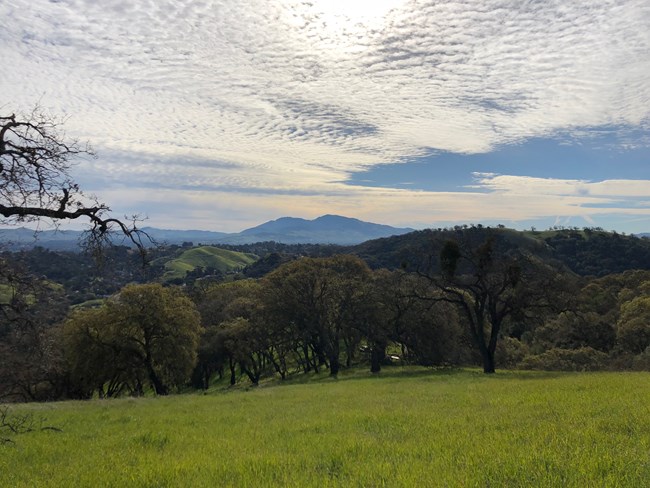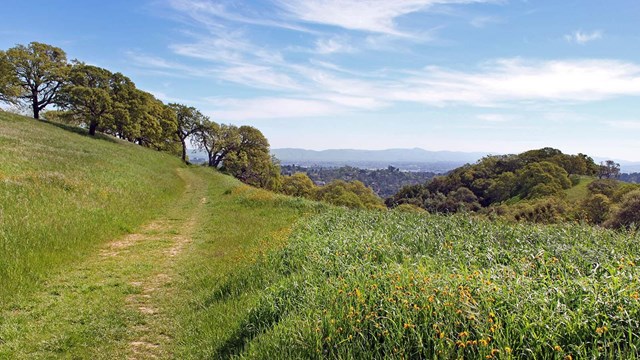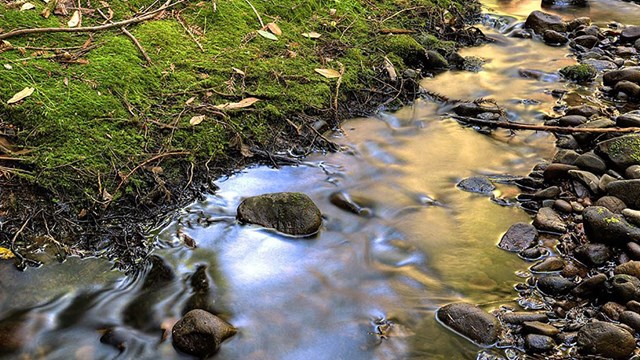
NPS ClimateClimate greatly influences the types of plants and wildlife found in an area. Located in the east San Francisco Bay area, John Muir National Historic Site is within the Mediterranean climate region of California. This Mediterranean climate zone occurs along the central and southern coastal areas of the state, where cool breezes come in from the Pacific coast and hot air is pulled from the interior portions of the state. Found in very few other places around the world, the Mediterranean climate is typically characterized by dry, hot summers and wet, mild winters. GeologyMt. Wanda elevation: 650ft How does the geology of Mt. Wanda affect the plants, animals, and ecosystems we see?Different types of rocks in an area determine which kind of soil is formed there. In turn, the type and composition of soil in an area impacts the vegetation that grows there, which then affects the types of animals that live there. The soil on Mt. Wanda is mostly loam and clay loam. Loam is nutrient rich with relatively loose texture and moderate water retention. Clay soil is lower in nutrient richness, but has a high potential to retain water. The combination of these two soils supports the diverse natural communities seen on Mt. Wanda, which tolerate a wide range of water availability. EcosystemsAn ecosystem is a biological community of interacting organisms, and their physical environment. Within ecosystems, there are different natural communities with unique combinations of plants and wildlife. On Mt. Wanda, there's an opportunity to see a variety of natural communities on a single day’s hike. The main trailhead at the northern section starts with bay laurel forest, then transitions to an oak woodland, followed by more open savannas and grasslands. Shrublands can also be found on site in more remote locations. To learn more about these communities, check out our plants page. 
Climate Change
Climate change is already affecting plants and wildlife. Learn more about what we know about climate change, and what we can do. 
Water Quality Monitoring
Long-term water quality monitoring helps park scientists understand how water quality and stream conditions are changing over time. |
Last updated: August 12, 2024
